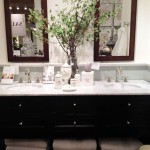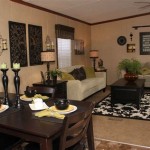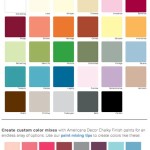Mixing Patterns In Home Decor: Essential Aspects
Mixing patterns in home decor is an art form that can transform a space from ordinary to extraordinary. By incorporating various patterns, you can create a visually dynamic and cohesive look that reflects your personal style. To achieve a successful pattern mix, it is essential to consider several key aspects. ### Color Harmony One of the most important aspects to consider when mixing patterns is color harmony. Ensure the colors in your chosen patterns complement each other, creating a pleasing and cohesive overall look. Consider using a color wheel to identify analogous (adjacent) or complementary (opposite) colors that will create a harmonious balance. ### Scale and Proportion The scale and proportion of the patterns you choose play a crucial role in the overall effect. Large-scale patterns are bold and eye-catching, while small-scale patterns are more subtle and delicate. Mix patterns of varying scales to create visual interest, but maintain a balance to avoid overwhelming the space. ### Pattern Density The density of a pattern refers to the amount of white space within it. Patterns with a high density (more design elements) are more visually active, while patterns with a low density (fewer design elements) are less visually busy. Mix patterns of varying densities to create a harmonious balance. ### Repetition and Rhythm Repetition and rhythm are key to creating a cohesive pattern mix. Repeat certain patterns throughout the space to create a sense of unity, but avoid using too many of the same patterns as it can become monotonous. Create a rhythm by alternating between patterns of different sizes, colors, or densities. ### Focal Point Every room should have a focal point, which draws the eye and creates a sense of balance. When mixing patterns, consider which pattern will serve as the focal point and arrange the other patterns around it. The focal point can be a rug, a piece of artwork, or a bold accent wall. ### Layer and Overlap Layering and overlapping patterns can create depth and interest in a room. Use different patterns on furniture, textiles, and wall treatments to add complexity to the design. Overlapping patterns can create a sense of movement and drama, but use them sparingly to avoid visual clutter. ### Balance Balance is the key to a successful pattern mix. Avoid using too many patterns in the same color family or scale, as it can create a visually overwhelming effect. Instead, aim for a balanced mix of large and small patterns, dense and sparse patterns, and bold and subtle patterns.
How To Mix Patterns Decorating With And Prints 2024
:max_bytes(150000):strip_icc()/Homepolish-interior-design-315c3-5b0ee9cf30371300373a21c5.jpg?strip=all)
22 Ways To Mix Patterns And Prints In Your Home Decor
:strip_icc()/101292749-122dc49e065a4004a7825981f1f056d9.jpg?strip=all)
Learn How To Mix Patterns
:max_bytes(150000):strip_icc()/IMG_6316-1024x683-5b0ef651119fa800377b3811.jpg?strip=all)
22 Ways To Mix Patterns And Prints In Your Home Decor

How To Mix Patterns Decorating With And Prints 2024

How To Mix Patterns Like A Pro
:strip_icc()/102028249-82d7e62757754dd482bfaaadb4ac5f19.jpg?strip=all)
Learn How To Mix Patterns

3 Tips To Mixing Patterns In Your Decor Eclectic Twist

Bold Living Rooms With Patterns How To Mix In A Room

Mixing Patterns In Interiors A 12 Step Masterclass Homes Gardens







